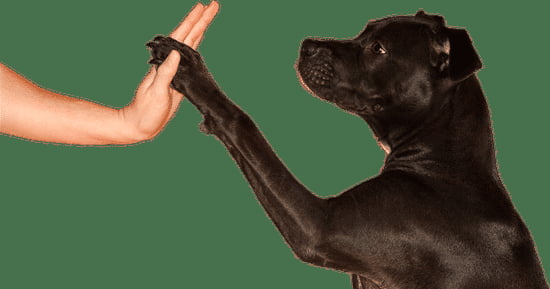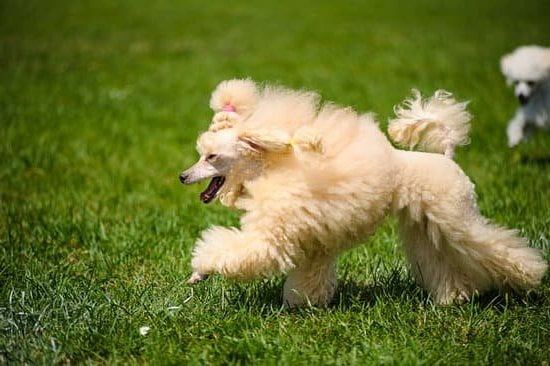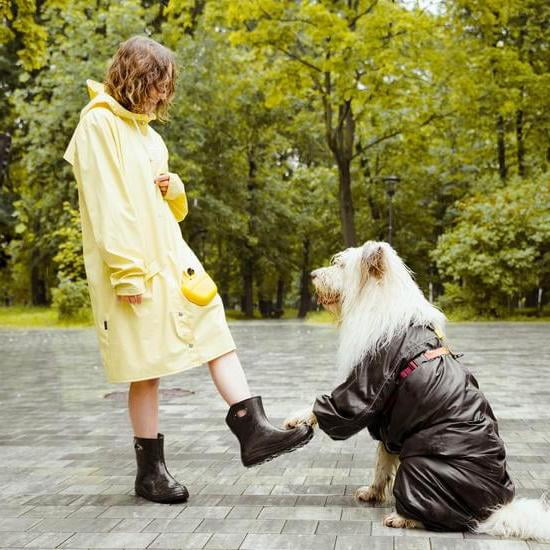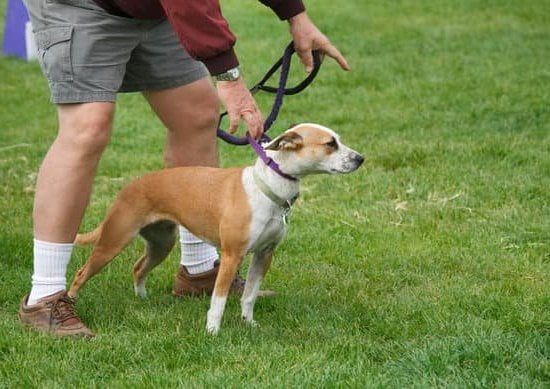How do you train a dog with a clicker? Clicker training has become increasingly popular as a positive reinforcement method for teaching dogs new behaviors and commands. In this article, we will explore the ins and outs of clicker training, from understanding how it works to advanced techniques and its effectiveness in building a strong bond between you and your furry friend.
Clicker training is a form of operant conditioning that uses a precise sound, the click, to communicate to the dog that they have performed the desired behavior. This method has been proven to be an effective way to teach dogs new skills while maintaining their enthusiasm and willingness to learn. Understanding how to properly use the clicker and implement positive reinforcement techniques is essential for successful training.
In the following sections, we will delve into the mechanics of clicker training, including choosing the right clicker and establishing a positive association with it. We will also discuss basic training techniques such as teaching sit, stay, come, and other commands using the clicker.
Additionally, we will address common challenges that may arise during clicker training and provide tips for troubleshooting them. So if you’ve ever wondered about using a clicker to train your dog or if you’re simply looking for a more effective method of communication with your pet, keep reading to discover the benefits and effectiveness of clicker training.
Understanding the Clicker
Clicker training is a positive reinforcement method that uses a small handheld device, the clicker, to communicate with a dog. The concept is simple: when the dog performs the desired behavior, you click the device and immediately follow it up with a treat or praise. This helps the dog associate the sound of the clicker with a reward, making it an effective training tool.
The clicker works by creating a distinct sound that marks the exact moment your dog performs the desired behavior, such as sitting or staying. This precise timing makes it easier for your dog to understand which action is being rewarded. It also helps eliminate any confusion or delay in communication between you and your pet.
Benefits of using a clicker for dog training include:
- Clear and consistent communication: The clicker provides an unmistakable signal to your dog that they have done something right.
- Faster learning: The instant feedback from the clicker helps dogs learn new behaviors more quickly.
- Bonding: Clicker training requires close attention and interaction between you and your dog, which can strengthen your relationship.
Using a clicker can be a fun and rewarding way to train your canine companion, leading to better behavior and mutual understanding.
Getting Started
When beginning clicker training with your dog, it’s important to choose the right clicker that works best for you and your pet. There are different types of clickers available in the market, such as box clickers, button clickers, and even apps that can be used on your phone.
The key is to find one that is comfortable for you to hold and easy for your dog to hear. It’s also essential to consider the volume of the clicker – it should be audible but not too loud as to startle or scare your dog.
Once you’ve chosen a suitable clicker, the next step is to establish a positive association with the sound. Start by clicking the device while giving your dog a treat immediately afterward. This will help your pet make a connection between the clicking sound and receiving a reward. Consistency is crucial during this phase of training, and you should aim to repeat this exercise multiple times throughout the day.
In addition to treats, using verbal praise along with the clicker can reinforce positive behavior more effectively. Dogs thrive on positive reinforcement, so combining treats and verbal praise with the sound of the clicker will create a strong association in their minds. By ensuring that your dog associates the clicking sound with something pleasant, you are laying a solid foundation for further training using this method.
| Choosing the Right Clicker | Establishing a Positive Association |
|---|---|
| Consider different types (box, button, app) | Clicking + treating for positive association |
| Find one that is comfortable for both you and your pet | Consistency in repeating exercises |
| Volume consideration – audible but not startling | Add verbal praise to reinforce positive behavior |
Basic Clicker Training Techniques
When it comes to basic clicker training techniques, it’s essential to start with simple commands such as sit, stay, and come. These commands form the foundation for more advanced behaviors and are crucial for effective communication between you and your dog.
To begin teaching these commands using a clicker, follow these steps:
1. Sit: Hold a treat above your dog’s nose and slowly move it back towards their tail. As their head follows the treat, their bottom will naturally lower into a sitting position. The moment their bottom touches the ground, click the clicker and give them the treat.
2. Stay: Start with your dog in a sitting position. Show them a treat in your hand and slowly take a step back. If they stay in place, click the clicker and give them the treat. Gradually increase the duration of the stay before clicking and treating.
3. Come: Attach a long line to your dog’s collar and let them roam a short distance away from you. Say “come” in an upbeat tone, reel in the line gently if necessary, and when they reach you, click the clicker and give them a treat.
These basic actions are crucial for everyday life with your canine companion and lay the groundwork for more complex behaviors down the line. When done correctly using positive reinforcement with a clicker, you’ll find that your dog quickly learns these commands with enthusiasm and willingness to please.
Positive Reinforcement
When it comes to using treats with the clicker, it is important to choose small, soft, and highly palatable treats that your dog loves. These treats should be reserved specifically for training sessions to maintain their value. Additionally, it is important to consider the size of the treat as you don’t want to overfeed your dog during training.
In addition to treats, praise also plays a crucial role in positive reinforcement. Dogs thrive on attention and affection from their humans, so verbal praise, petting, and even playtime can be great forms of positive reinforcement when used in conjunction with the clicker. It’s important to learn what kind of praise motivates your dog the most and use it accordingly during training sessions.
| Positive Reinforcement Element | Consideration |
|---|---|
| Treats | Choose small, soft, and highly palatable treats specifically for training. |
| Praise | Use verbal praise, petting, or playtime based on what motivates your dog. |
Troubleshooting Common Challenges
Identifying Common Distractions
When training a dog with a clicker, distractions can be one of the biggest challenges. Dogs are naturally curious and easily distracted, so it’s important to identify what triggers your dog’s attention during training sessions. Common distractions may include other animals, interesting smells, loud noises, or even just an unfamiliar environment. By understanding what distracts your dog, you can better address these challenges and adapt your training techniques accordingly.
Strategies for Addressing Distractions
One effective strategy for addressing distractions during clicker training is to gradually increase the level of difficulty as your dog progresses. Start training in a controlled environment with minimal distractions, gradually introducing more challenging situations as your dog becomes more proficient in following commands. Additionally, using higher value treats or rewards can help maintain your dog’s focus when faced with distractions.
Another useful technique is to use a release cue to redirect your dog’s attention back to you when they become distracted. With consistent practice and patience, you can help your dog overcome common distractions during clicker training.
Dealing With Stubborn Behavior
Stubborn behavior can also pose a challenge during clicker training sessions. It’s important to remember that each dog has its own personality and learning pace, so be patient and understanding when dealing with stubborn behavior. One approach to addressing stubbornness is to break down the training task into smaller steps and reinforce each small success with the clicker and treats.
This incremental approach can help build confidence in your dog and make the training process more manageable. Additionally, using positive reinforcement consistently can encourage your dog to cooperate and follow commands willingly, even when they initially exhibit stubborn behavior. By remaining calm, consistent, and encouraging, you can effectively address stubborn behavior during clicker training sessions.
Overall, addressing distractions and stubborn behavior requires patience, consistency, and creativity in adapting your training techniques to meet the individual needs of your dog. With time and practice, you can overcome common challenges and build a strong foundation for successful clicker training with your canine companion.
Advanced Clicker Training
Understanding Shaping
Shaping is a clicker training technique that involves breaking down a complex behavior into smaller, manageable steps. This method allows you to gradually teach your dog the behavior you desire by reinforcing each small step that leads to the final behavior.
For example, if you want to teach your dog to roll over, you can start by clicking and rewarding them for simply lying down, then for turning their head, then for shifting their weight, until they eventually roll over completely.
Implementing Shaping Techniques
To implement shaping in clicker training, it’s important to have patience and be prepared to work at your dog’s pace. Start with an end goal in mind, but be willing to reward any approximation of the desired behavior.
You can also use a verbal cue or hand signal along with the clicker to help your dog understand what specific action you are rewarding. It’s essential to keep training sessions short and positive, as shaping more complex behaviors can take time and persistence.
Capturing Behaviors
In addition to shaping, capturing behaviors is another advanced clicker training technique. This method involves waiting for your dog to naturally perform a behavior on their own and then immediately clicking and rewarding them for it. For example, if your dog yawns or stretches, you can capture these actions by quickly clicking and treating them.
Capturing allows you to reinforce behaviors that may be difficult to prompt intentionally and can lead to some unique tricks or commands in your dog’s repertoire. Remember that consistency is key when using capturing techniques in clicker training.
Clicker Training for Specific Purposes
Clicker training can be an effective method for achieving specific goals with your dog, such as agility training, obedience training, and behavior modification. When it comes to agility training, the clicker can be a valuable tool for shaping and capturing the desired behaviors required for navigating obstacle courses. By using the clicker to mark the exact moment when your dog performs a specific action, you can effectively communicate what you want them to do while participating in agility activities.
In obedience training, the clicker can help reinforce the desired responses to commands such as sit, stay, heel, and come. The precision of the click sound allows for clear communication with your dog about which behaviors are being rewarded, making it easier for them to understand what is expected of them during obedience training sessions. Additionally, using positive reinforcement techniques with treats and praise in conjunction with the clicker can further solidify their understanding of these commands.
Behavior modification is another area where clicker training can be beneficial. Whether you are working on reducing undesirable behaviors such as excessive barking or leash pulling or encouraging more desirable behaviors such as calm behavior when visitors arrive or walking politely on a leash, the clicker can help reinforce the appropriate responses from your dog.
By consistently using the clicker to mark and reward desired behaviors, you can effectively shape and modify your dog’s overall behavior in a positive way.
Ultimately, utilizing clicker training for specific purposes like agility, obedience, and behavior modification can strengthen the bond between you and your canine companion by providing clear communication and positive reinforcement throughout their learning process.
Conclusion
In conclusion, clicker training has proven to be an effective and worthwhile method for teaching dogs a variety of behaviors and commands. The use of a clicker as a marker paired with positive reinforcement techniques, such as treats and praise, can result in faster learning and better retention of commands. This training method is not only effective but also strengthens the bond between you and your canine companion.
When properly introduced and utilized, the clicker becomes a powerful tool for communication between you and your dog. It helps to clearly indicate the exact moment when your dog has performed the desired behavior, making it easier for them to understand what is being asked of them.
Through consistent use of the clicker and positive reinforcement, dogs learn to associate good behavior with rewards, strengthening their understanding of what is expected while also building trust and confidence in their relationship with their owner.
Ultimately, clicker training encourages a more harmonious relationship between dogs and their owners. It establishes a clear line of communication, builds mutual respect, and fosters a deeper understanding between both parties. With patience, practice, and dedication, clicker training can lead to a well-behaved and happy canine companion who understands commands, respects boundaries, and enjoys the process of learning from their owner.
Frequently Asked Questions
How Do You Use a Dog Clicker to Train Your Dog?
Using a dog clicker to train your dog involves associating the sound of the clicker with a reward, such as a treat or praise. You start by clicking the device and then immediately giving the dog a treat.
With repetition, the dog will learn to associate the click with a positive outcome. Once this association is established, you can use the clicker to mark desired behaviors in your training sessions.
How Do You Train a Dog to Stand With a Clicker?
Training a dog to stand with a clicker involves using the same principles as general clicker training. Begin by capturing the behavior – when your dog naturally stands, click and reward them.
Over time, you can introduce a verbal command or hand signal for “stand,” and use the clicker to mark and reinforce the behavior. With consistent practice, your dog will learn to stand on cue when they hear the click.
How Do You Crate Train a Dog With a Clicker?
Crate training a dog with a clicker involves creating positive associations with the crate and using the clicker to reinforce calm, relaxed behavior near or inside it. Start by introducing the crate slowly, using the clicker and treats to reward any voluntary interaction with it.
Gradually build up duration and comfort level inside the crate by marking and rewarding moments of relaxation with clicks and treats. This positive reinforcement helps create a strong bond between your dog and their crate.

Welcome to the blog! I am a professional dog trainer and have been working with dogs for many years. In this blog, I will be discussing various topics related to dog training, including tips, tricks, and advice. I hope you find this information helpful and informative. Thanks for reading!





